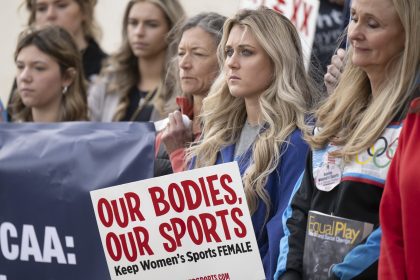Tulsa Race Massacre Reparations Lawsuit to Proceed After Ruling

TULSA, Okla. — Tulsa County District Court Judge Caroline Wall ruled on Monday against a motion to dismiss a lawsuit seeking reparations for the 1921 Tulsa Race Massacre.
The lawsuit was filed by civil rights attorney Damario Solomon-Simmons in 2020 on behalf of three survivors of the massacre, which took place during the 1921 Memorial Day weekend and saw 35- square-blocks of Tulsa’s affluent, predominantly Black Greenwood District destroyed by a mob of White residents.
Solomon-Simmons sued under Oklahoma’s public nuisance law.
The massacre took place after a 19-year-old Black shoeshiner was accused of assaulting a White 17-year-old elevator operator, leading vigilantes to attack the community that had become known as “Black Wall Street.”
In all, 26 Black residents and 13 White residents were killed as a result of the ensuing mayhem, according to a 2001 state commission examination of the events. The lawsuit filed by Solomon-Simmons asserts that the victims of the race riot were never properly compensated and their suffering was worsened by being unlawfully detained and having their efforts to rebuild impeded.
Further, the lawsuit claims the riot killed hundreds of Black residents — far more than the state commission’s tally — while leaving thousands more injured. The suit maintains that over 9,000 Black Tulsa residents were left homeless and nearly 1,500 homes and businesses were destroyed overnight.
The lawsuit lists the City of Tulsa, Tulsa Regional Chamber, Tulsa Development Authority, Tulsa Metropolitan Area Planning Commission, the Board of County Commissioners for Tulsa County, the Oklahoma Military Department and Tulsa Sheriff Vic Regalado as defendants.
“From the period immediately after the massacre until the present day, defendants actively and unreasonably, unwarrantedly, and/or unlawfully thwarted the community’s efforts to rebuild, neglecting the Greenwood and predominantly Black, North Tulsa communities,” the text of the lawsuit reads.
“Instead, defendants redirected public resources, which should have been used to abate the nuisance surrounding Greenwood, to benefit the overwhelmingly White parts of Tulsa,” the lawsuit states.
Wall’s ruling on Monday allows the lawsuit to proceed as the plaintiffs seek unspecified punitive damages, mental health and education programs, the creation of a hospital in north Tulsa and a Tulsa Massacre Victims Compensation Fund. The plaintiffs also want a detailed accounting of the property and wealth lost or stolen as a result of the massacre.
An Oklahoma judge had previously ruled that the pharmaceutical company Johnson & Johnson was liable for its role in worsening the state’s opioid crisis under its public nuisance law, a ruling that Solomon-Simmons said helps bolster the massacre victim’s case.
However, the Oklahoma Supreme Court overruled the Johnson & Johnson verdict and asserted that the state’s public nuisance law did not apply because the company didn’t control the dispensing of its drugs after they were sold to pharmacies, hospitals, and physicians’ offices. For now, the lawsuit will proceed and the judge will hear arguments from both sides in the case.
Each of the living survivors involved in the lawsuit is over 100 years of age, and Solomon-Simmons said it’s important for them to see justice during their lifetimes in a press conference following Monday’s ruling.
Reece can be reached at [email protected] or on Twitter at @ReeceNWrites






















